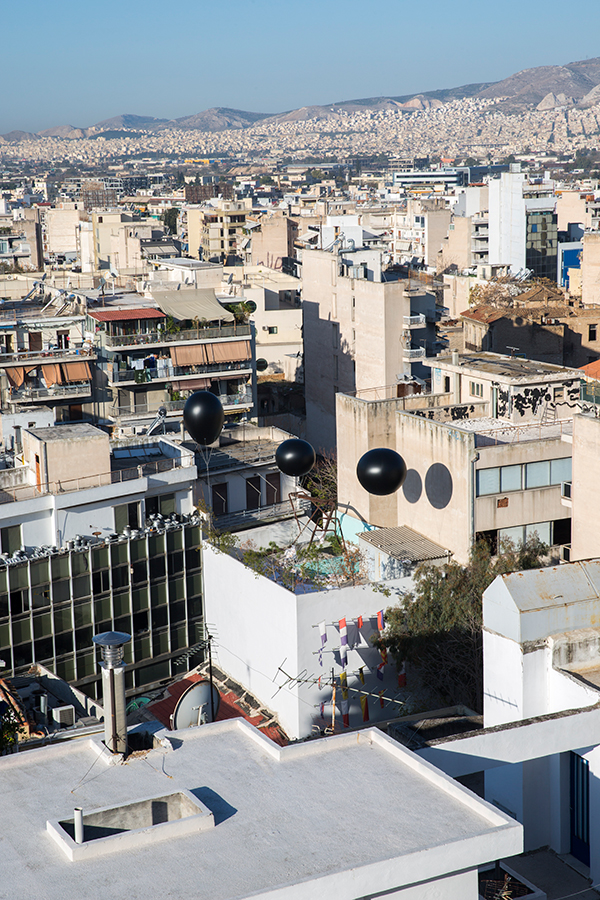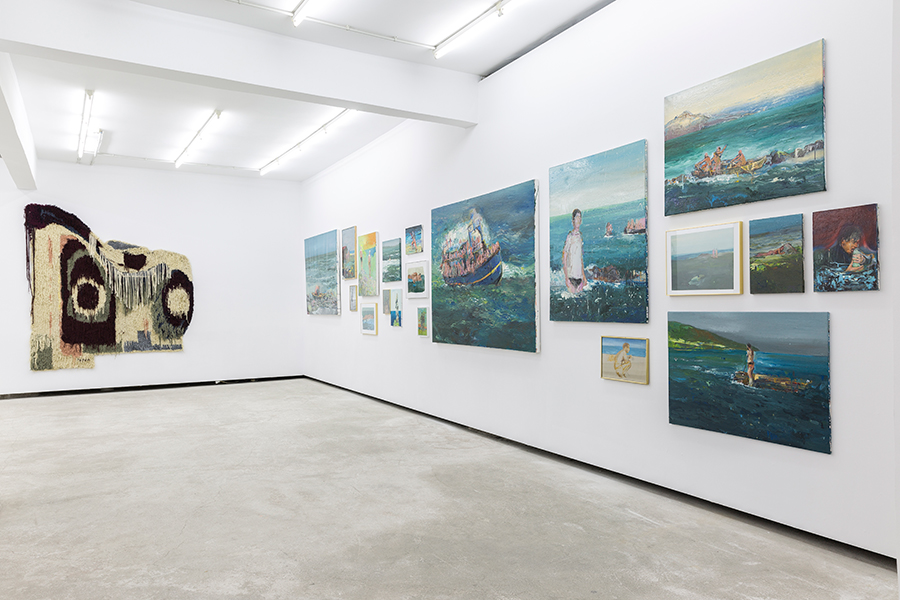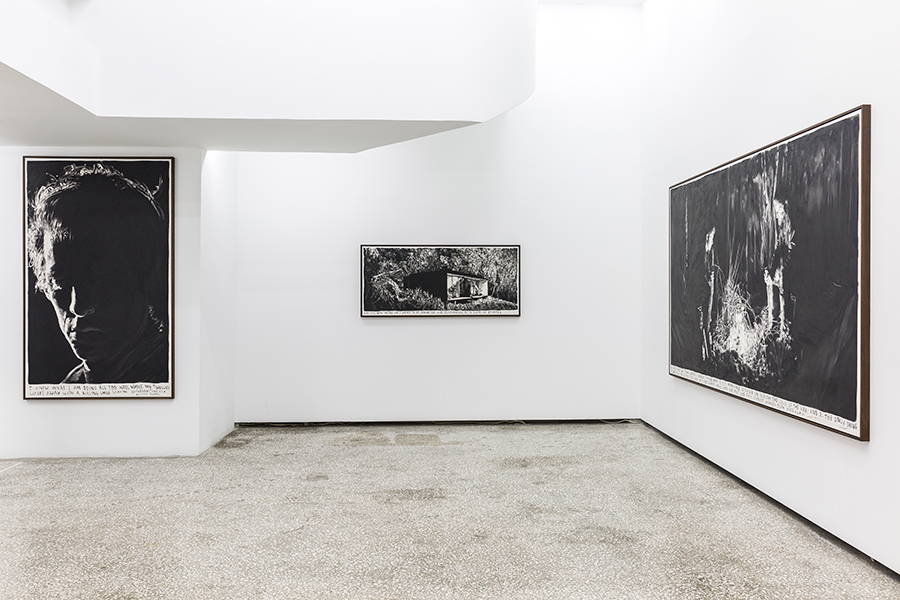The Breeder
Condo Units Athens 2018 Review
November 12, 2018–November 12, 2018Frieze
We are pleased to share the review of “Condo Unit Athens 2018” show at The Breeder, published 12 November 2018 on Frieze, written by Izabella Scott.
More Group Show Than Art Festival, Condo Unit Lands in Athens
BY IZABELLA SCOTT
Held at The Breeder, Athens, this eight-gallery iteration sees a tight and rewarding version of the gallery-share concept
Condo began in London in 2016 as an attempt to form a network of galleries outside of the fair model. In the industry equivalent of couch surfing, young commercial galleries offered floor and wall space to their international colleagues, sharing contacts and extending international networks, without the associated costs of participating in an art fair. Condo has since gone global, with editions in New York, Mexico City and Shanghai, and the pool of participants is growing: in New York last year, 16 Manhattan galleries hosted 20 others, from China to Mexico. Among it all, London-based gallery Carlos/Ishikawa is a constant feature: Condo was established by its co-founder Vanessa Carlos.
I remember attending the first iteration – a sprawling affair, which had viewers zigzagging between venues across the city. Because of London’s scale, it felt like a marathon. Perhaps this is why, this year, there has been a simplification of the concept: Condo Unit, which takes place in a singe venue, is much more like a group show than an art festival. The new model first opened in São Paulo this April, and is currently taking place in Athens, where The Breeder is hosting seven international galleries.
Founded in 2002, The Breeder began as an art magazine, run by George Vamvakidis and Stathis Panagoulis. Six years in, the gallery took over an abandoned 1970s ice cream factory on a cobbled street in Metaxourgeio, once the district of craftsmen. The concrete building was reworked into elegant exhibition space with three floors and a roof terrace. A week before the gallery opened in September 2008, the global financial collapse altered the world, events that would only be fully felt ten months later, in what is still known as The Crisis. What was then an upcoming area is now one of the rougher parts of central Athens, and a concentrated red light district; studies show, the number of sex workers in the city increased by 150% from 2008–2012 alone.
Entering their space and you will find three galleries sharing the ground floor: König Berlin, Raster of Warsaw and Carlos/Ishikawa. Along the back wall is a new work by Ed Fornieles, The Crypto Certificate (2018), which takes the form of a promo video for an investment programme in Ed Fornieles Studios, and the ensuing certificate. Now based in Athens, Fornieles is offering artist’s edition that also doubles as a cryptocurrency certificate, purchased for the equivalent of EUR€550. An example is framed beside the screen, its pastel-colour watermarks reminiscent of a festival ticket.
Elsewhere on the ground floor are five large charcoal drawings by Belgian artist Rinus Van de Velde, represented by König: blurry, smudged scenes which have the illusion of paintings. In one, He only said two things (2018), two men sit around a campfire staring pensively into the flames. Van de Velde inserts a line of text along the lower side of each drawing, imbued with the faux-nostalgia of a Jack Daniels whisky advert. ‘…The only thing I can teach you is that the ones with the rawest voice sang the most…’ reads this one, knowingly saccharine.
A group of sculptures by Raster gallery artists complete the ground floor trio. The easiest to decode are Janek Simon’s series ‘Polyethnic’ (2016). Each around 60cm high they comprise quasi-ethnographic objects, drawing on folk and tribal art – Simon has made them at home using a 3D printer. There is a man with the head of a bird, and a Kali-esque figure with six arms.
Towards the centre of the same room are two works by the neo-dada collective Slavs and Tatars, also represented by Raster. Co-founded by a Polish-Iranian duo in 2005, they work to destabilize language and undermine taste, attempting to view the world though what they call a ‘Eurasian’ viewpoint. On show at The Breeder is woolen carpet, Qatalogue (2018), which depicts an elongated scarlet-red tongue that curls around seven letters stolen from the Slavic alphabet. On a plinth to its left is Hung and Tart (2016), a glass object streaked with amber and beetroot-pink, that looks somewhere between a dildo and a fossilized tongue.
Upstairs, two galleries are each given a room of their own – Grey Noise, Dubai and Barbara Thumm, Berlin. The latter offers the best works yet, a room almost entirely taken over by Fiona Banner, working under her imprint The Vanity Press, playing with gesture, signage and alienation. Blind Texts (2018) are silk drapes of various sizes, some held in display stands, others hanging loosely from above, and which have been printed with dummy text or enlarged punctuation marks. Between the drapes are hung two oil paintings, both titled Full Stop Seascape (2018), in which Banner has painted surreal full stops in the ocean that float like circular buoys. For both, she worked onto found nautical paintings, replacing commemorative ships with punctuation marks. There is a finality to the black dot, a reflection of policed borders and boats that are turned back.
After the Greek financial meltdown of 2009, a surge of artists moved to Athens from central Europe in order to make the most of the cheap rents. At the same time, growing numbers of migrants arrived on Greek shores, fleeing war and deprivation in the east. In The Breeder’s downstairs room, there’s an effort to identify shared subject matters along the Occident-Orient binary, and the display teases out some of the exhibition’s overarching themes: ethnography; borders and seas. Art: Concept, Paris, cohabit the lower space with Dastan’s Basement, a commercial gallery from Tehran. Alone on one wall, a signature hairy hanging by Caroline Achaintre, titled BiaUltra (2017), is woven from hand-tufted wool. Threads of dark maroon, cream and gunmetal grey come together in shaggy primitivism. Adjacent to this are 18 seascapes in oil by the Ghasemi Brothers, a collective of three siblings from Bandar-e Anzali, a port city on the Caspian Sea in the north of Iran. It’s the first time the brothers have shown outside of their native land. Their paintings are hung in salon-style along one wall, each a different shape and size. In one, a fishing boat is stuffed with pink bodies; it’s hard to see if this is a holiday scene, or a crisis, but there’s a frantic energy to the brushstrokes, which render the sea choppy and the bodies blurred. In a painting to the right, a man is waist-deep in seawater, the rocks around him rendered in skin-like tones.
As I leave, I turn back to look at The Breeder’s façade, which is covered in a chequerboard of maritime flags, a work by the Greek art collective Arbit City, which emits a scrambled message. Framed against the cloudless blue sky are three helium balloons stretching off their ropes – Banner’s full-stops, now inflatable markers, at once ominous and blithe.
Condo Unit Athens runs at The Breeder until 24 November 2018.


